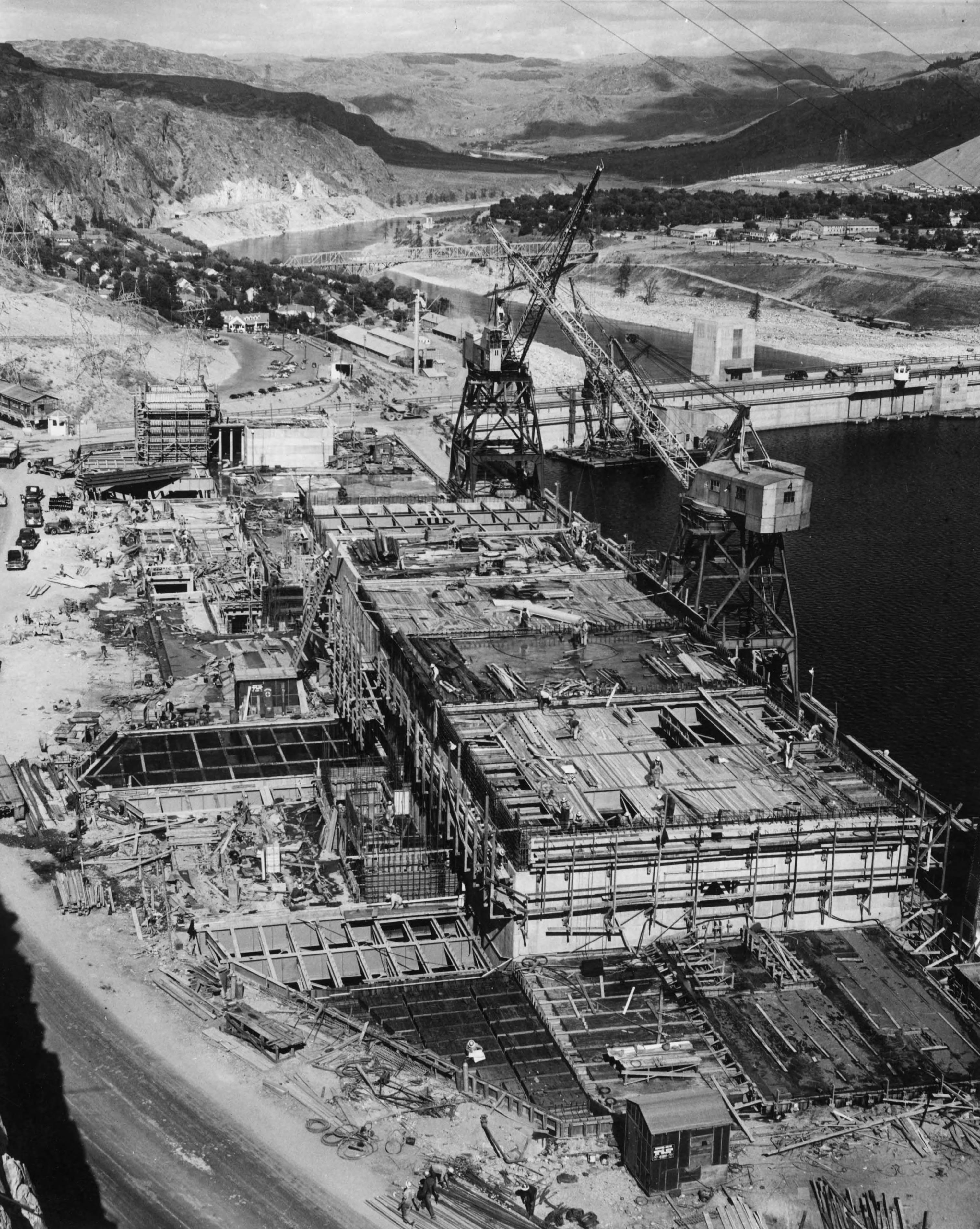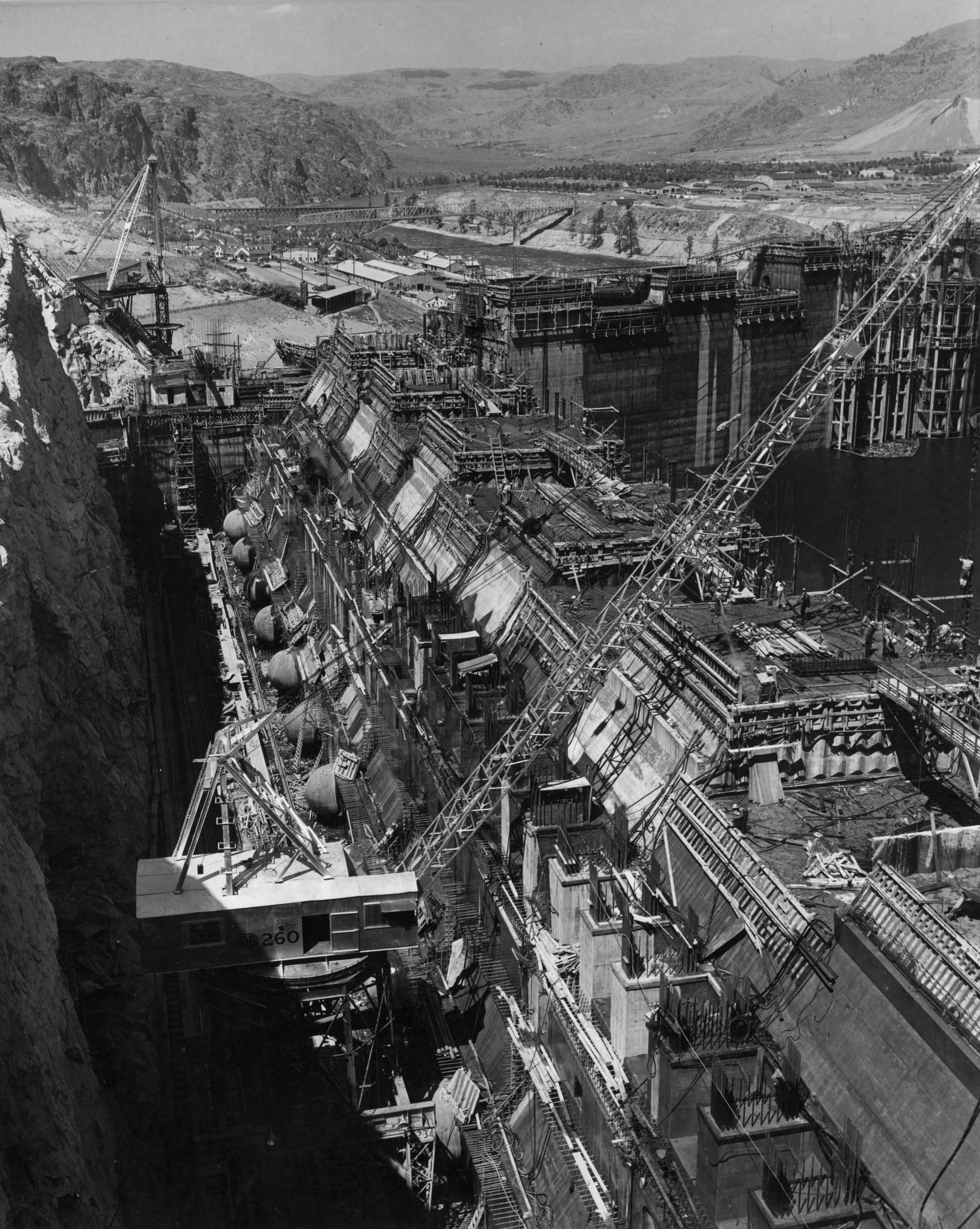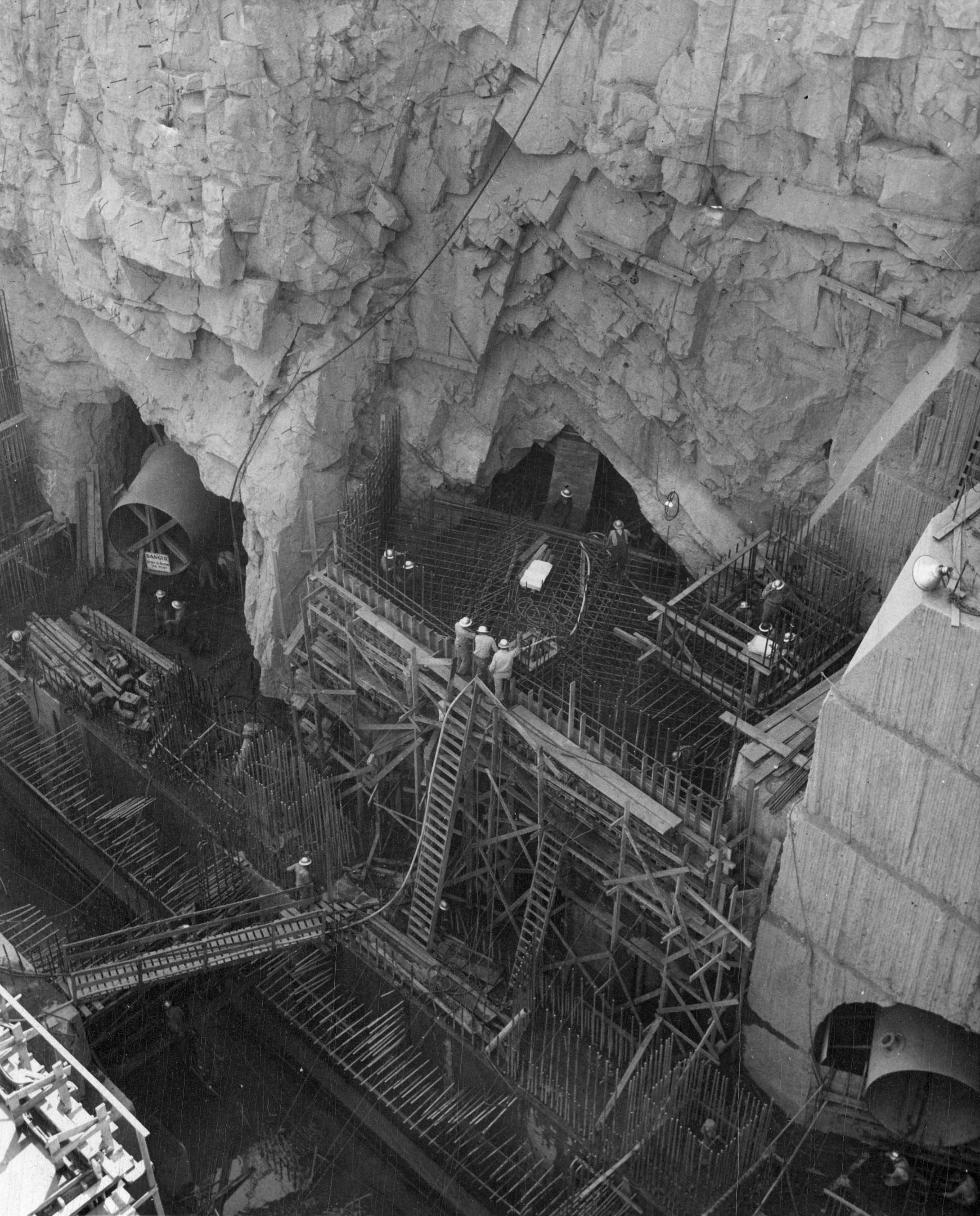Today, we’re discussing the Grand Coulee Dam and irrigation pumping plants and discharge pipes.
The Grand Coulee Dam is part of the larger Columbia Basin Irrigation Project which was commissioned by Congress in 1943 (although “construction of the irrigation system did not start until after World War II”).1 The Project “is an immense irrigation development in central Washington state that provides water from the Columbia River to about 671,000 acres on the Columbia Plateau.”2
Here’s how the system works: “water from Lake Roosevelt behind Grand Coulee Dam is pumped uphill to a 27-mile-long reservoir, Banks Lake, from which it flows by gravity into a series of canals. Outlets for unused water empty into the Columbia above Richland and Pasco more than 125 miles to the south. The project includes more than 300 miles of main canals, 2,000 miles of laterals and 3,500 miles of drains and wasteways. The project provides irrigation water to 2,050 farms. Apples, wheat and corn are the largest-volume crops. There also are large herds of dairy cows and beef cattle. Annually, the cash value of farm production in the Columbia Basin Project is about $630 million.”2
Additionally, “O’Sullivan Dam on Crab Creek about 15 miles south of Moses Lake creates Potholes Reservoir, which captures return flows from the northern half of the project. The Potholes Canal flows out of the lake and serves the southern part of the project.”2 Said in another way, “Potholes Reservoir collects runoff from the north for farms in the south. Water from drains and waste ways returns to the canal system to be reused,” as “irrigation water from the Columbia Basin Project is often used more than once before it returns to the Columbia River near Pasco [Washington].”1
“In addition to supplying water for irrigation, producing electricity, controlling floods, providing recreation, and regulating streamflow, the Columbia Basin Project also provides water for cities, industries, navigation, and endangered species.”1
Sources
Photos courtesy of PG 94 (Army Corps of Engineers Dam Construction Photographs).


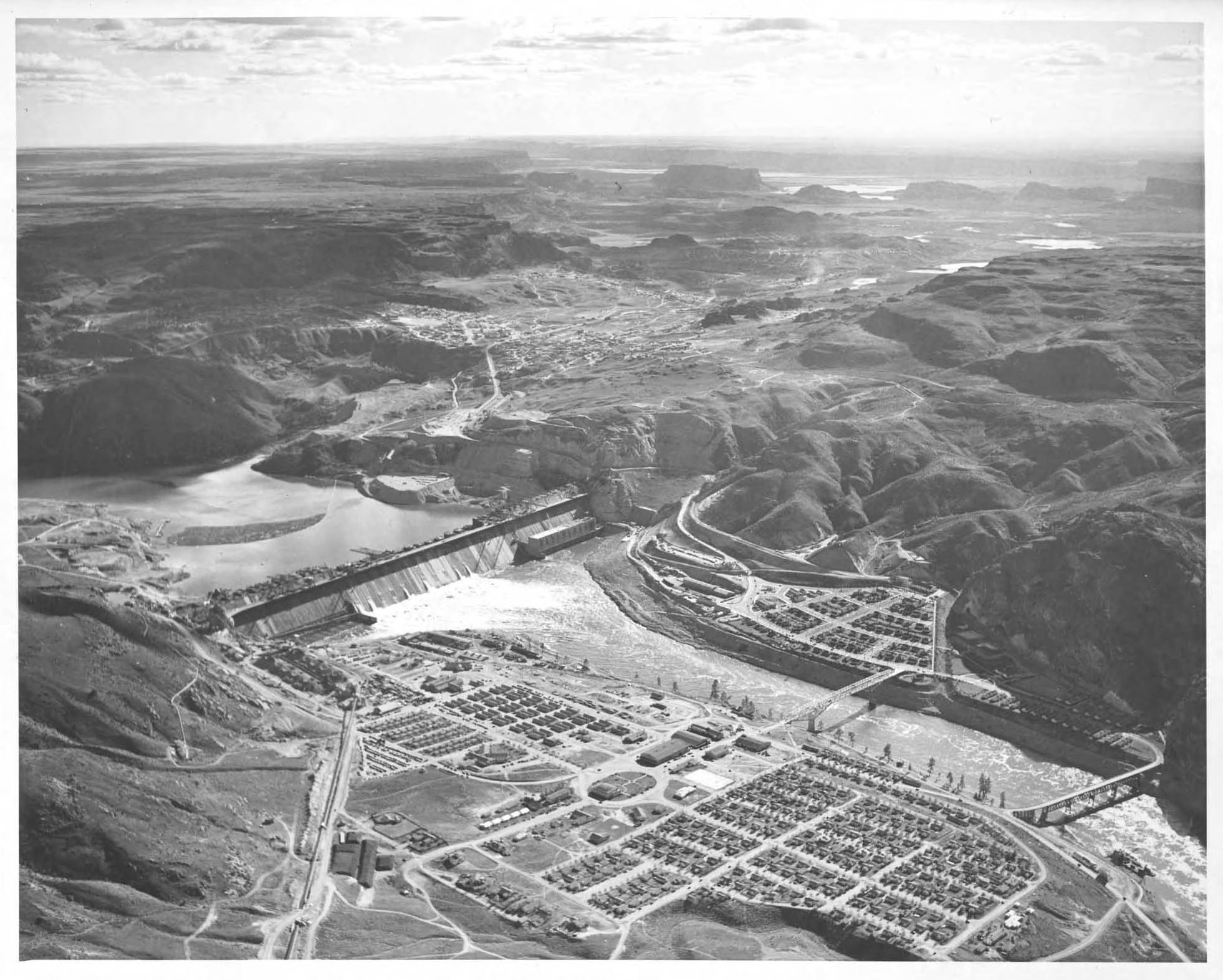
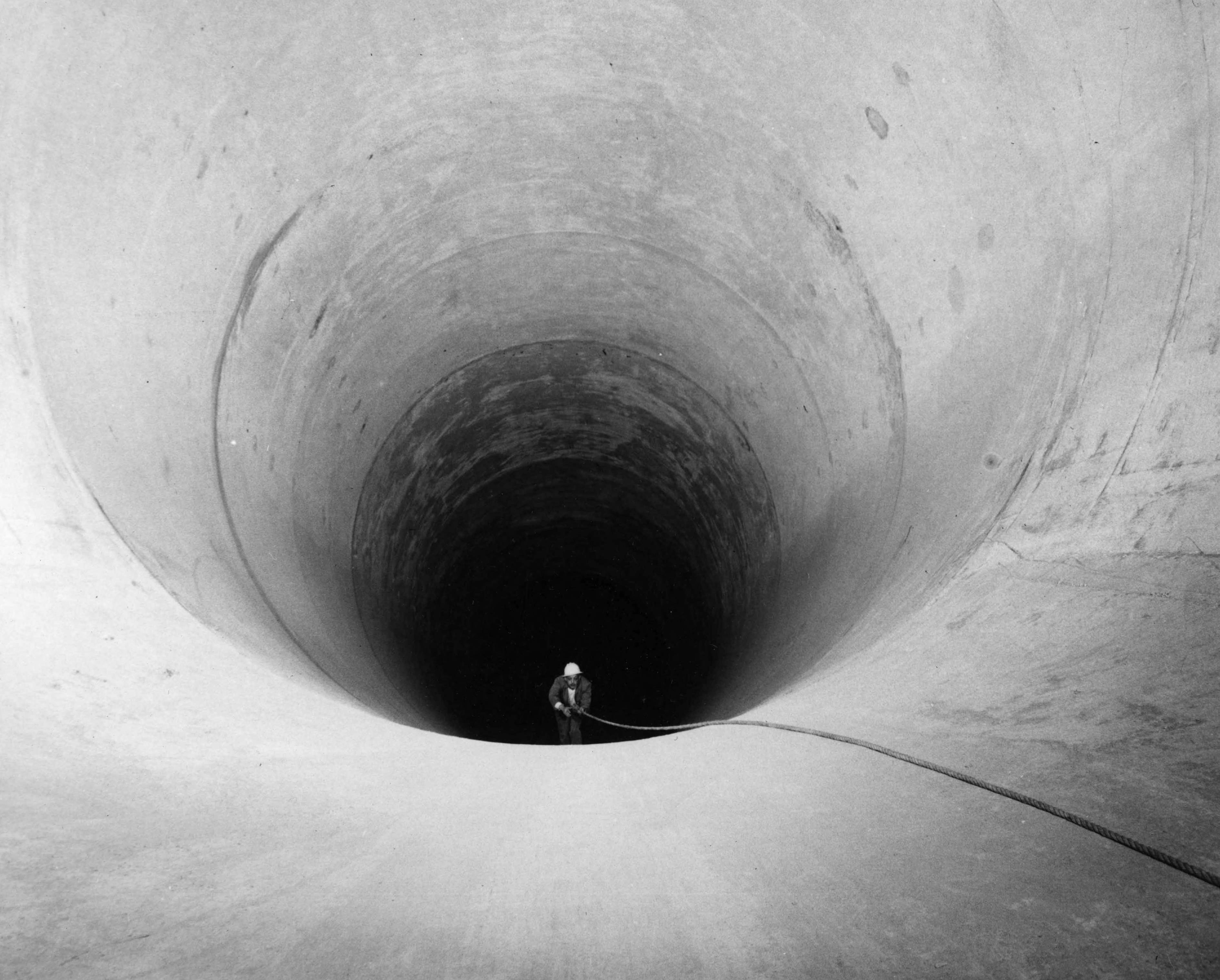
![View Of Tunnels In The Bank [02] (Coulee Dam irrigation pumping plant and discharge pipes)](https://objects.lib.uidaho.edu/crbp/crbp1151.jpg)
